Cruising the Galapagos with Aqua Expeditions
Wild things and superyacht bling abound on an exclusive cruise in Ecuador’s biodiversity hotspot.

The rules of engagement are clear in Ecuador’s Galapagos Islands: Don’t touch the wildlife and keep a distance of at least 2m. That’s easier said than done in a biodiversity hotspot where the animals have little fear of human interlopers. Take the curious young female sea lion that waddles out of the ocean towards my backpack on the beach, and lies down beside it as though it’s a comfort toy. I give her space and take a photo. She raises her head, contemplates my presence and decides to investigate. An unnerving dance ensues; an evasive two-step shuffle in which I back off but am pursued repeatedly. Eventually she gives up and flops on to the sand. I don’t blame her. The sun is beaming down here on Genovesa Island; the air is warm and the ocean bountiful. Paradise found.
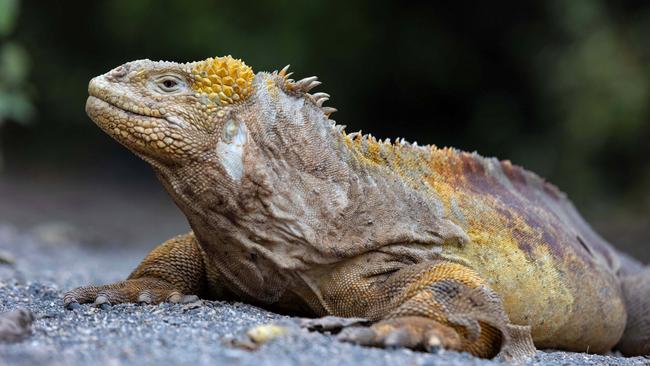
The young Charles Darwin was not so enamoured when he spent five weeks in the archipelago in 1835. He found the heat “infernal”, the iguanas “hideous” and the rough lava rock “horrid”. But he was captivated by the fantastical volcanic landscapes of the four islands he visited and their animal inhabitants. He arrived a creationist, but after returning to London and pondering his discoveries, Darwin began to question how species could be conjured by the Almighty when they appeared to evolve and adapt to their individual environment. Twenty-four years later, his groundbreaking work, On the Origin of Species, was published.
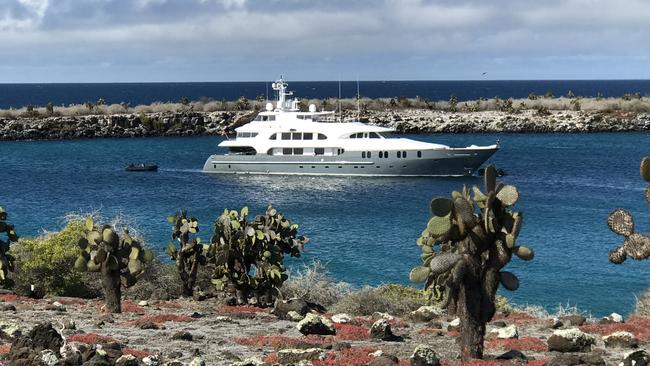
The naturalist travelled to the Galapagos on HMS Beagle, a variety of sloop dubbed “coffin-class” by virtue of its unfortunate habit of sinking. It was less than 28m long yet carried 74 people. In comparison, I am aboard Aqua Expeditions’ Aqua Mare, a 50m superyacht that accommodates just 16 guests across seven ensuite staterooms, including an enormous 80sq m owner’s suite. Darwin wouldn’t believe the opulence.
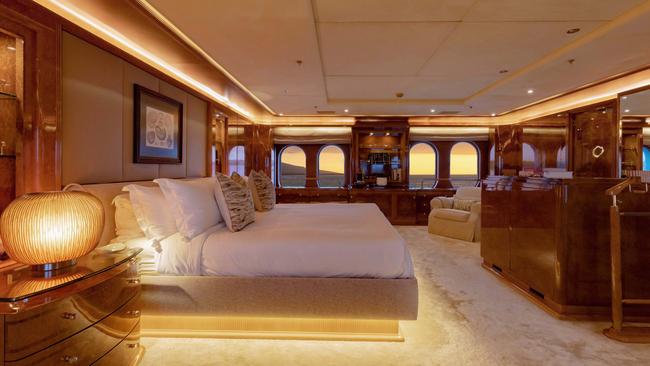
The interiors are gleaming with polished brass, glass and root-oak veneer panelling as shiny as a mirror. Our intimate party of only seven passengers rendezvous in the Panoramic Lounge, where guide Daniela imparts her extensive local knowledge. Cocktails are shaken and stirred by affable barman Heiro and sipped on a vast horseshoe-shaped white sofa that, a few of us discover, lends itself to unscheduled afternoon naps.
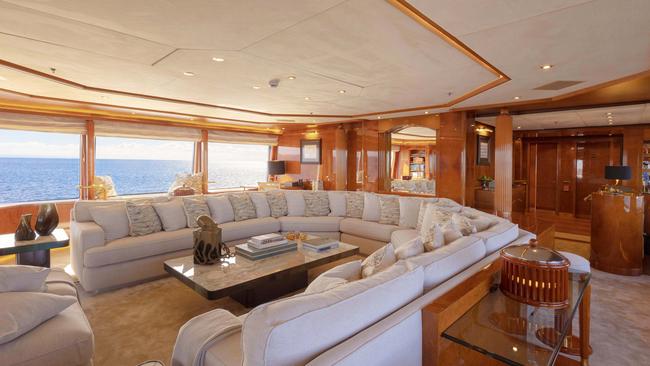
Over ensuing days we dine astern at an al fresco setting, on the upper deck near the jacuzzi, or in the formal dining room at a gorgeous Carrara marble table. Chef Eric, with his impressively waxed and twirled moustache, pampers us daily with the likes of ceviche topped with popcorn, tasty empanadas, ultra-fresh sashimi, a Mexican banquet and barbecued lobster.
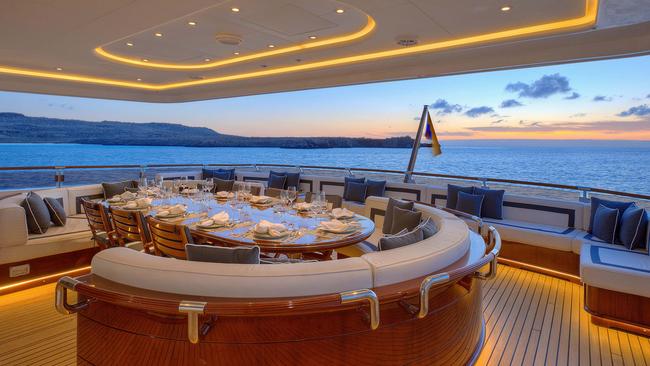
The vessel is a knockout, but it’s the attractions on land and in the water that have brought us here. Every shore excursion begins with some jaw-dropping natural phenomenon that surely cannot be surpassed, whether it’s marine iguanas surrounded by bright orange sally lightfoot crabs or a flotilla of green sea turtles popping up for air. There are daily outings and one afternoon we arrive at an isolated beach on Santa Cruz Island to find two turtles “doin’ what comes natur’lly” in the shallows, waves washing gently over their shells. Love truly is a many splendoured thing. Our appearance interrupts their tryst and they swim off, then half a dozen blue-footed boobies turn up to put on a spectacle. Scanning the water for fish, they hone in on their prey and dive-bomb like kamikaze pilots before bobbing to the surface. Frequently their efforts go unrewarded but we cheer to see a silver fish clasped in one bird’s beak.
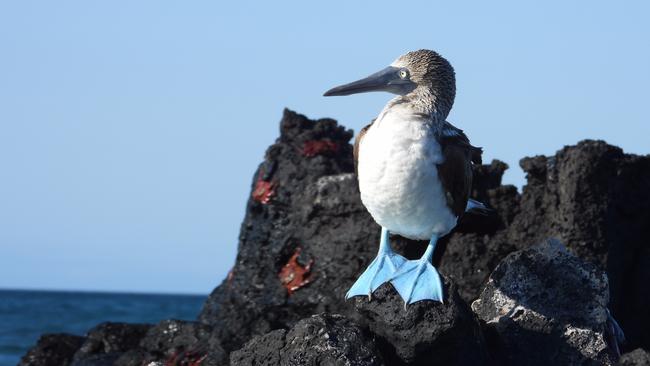
It’s no wonder the Galapagos is an ornithologist’s mecca. Of the 56 sea and shore species found here, 80 per cent are endemic. The list includes Darwin finches (which proved crucial to the scientist’s theories on adaptation); flightless cormorants (their wings are useless but they’re excellent swimmers); flamingoes (turned pink by their diet of shrimp); waved albatross (which nest only on Espanola Island); magnificent frigatebirds (also known as pirate birds because they attack other birds to steal their food); and swallow-tailed gulls (the world’s only nocturnal gull).
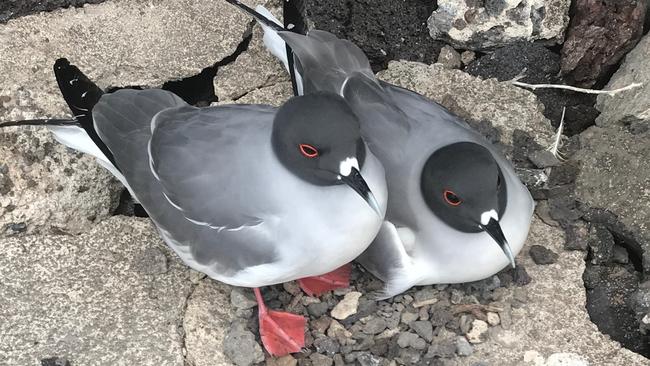
The boobies – blue-footed, red-footed and Nazca – are endlessly entertaining. Nazcas are so plentiful on Genovesa we take care not to step on them as they fuss around their ground nests and toddle between us. We watch as a male red-footed booby returns to his mate, making a great song and dance about his offering of a twig for the nest. Elsewhere we spy albatross chicks, rather ragged brown offspring that surely can’t be related to the graceful gliders that skim the ocean’s surface. The adults may be masters of the skies yet they sway clumsily across the coastal scrub as though in need of a hip replacement.
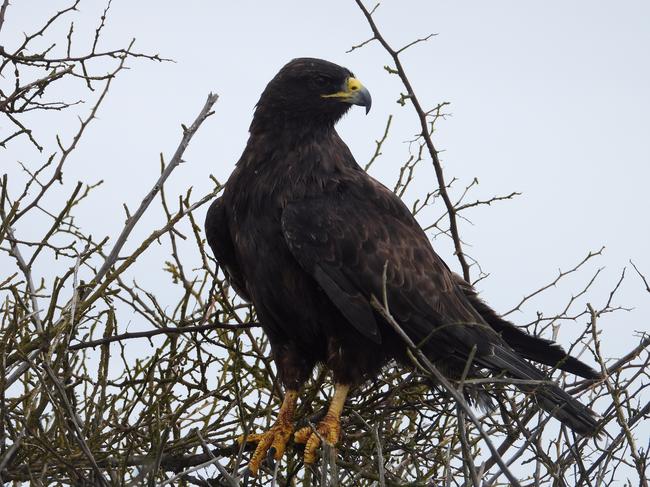
On Bartoleme Island we are loudly orchestrating a group photo when a Galapagos hawk appears overhead, riding the thermals. It swoops then alights on a nearby rock, its back turned superciliously towards us. We are instantly rendered silent in the presence of this regal creature.
In Darwin’s time, and for centuries before, giant tortoises were considered an easy food source for seafarers, who would plunder the islands and store them live onboard for long voyages. As a result, the 12 remaining subspecies are considered vulnerable or critically endangered.
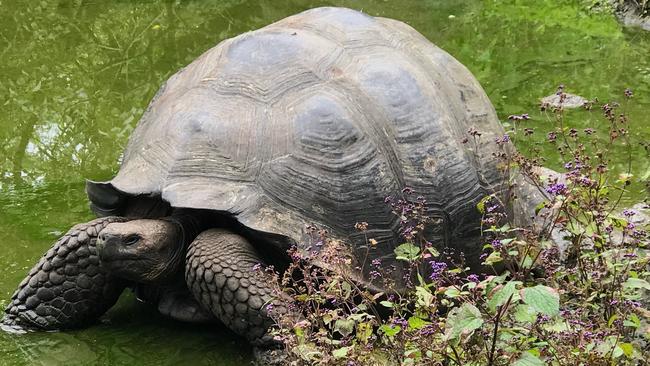
We board a minibus in Puerto Ayora on Santa Cruz, one of four inhabited islands, to take us to a reserve in the highlands where tortoises roam freely (and very slowly). The journey takes us past lush fields where corn, papaya, coffee, bananas and sugar cane grow profusely in the rich volcanic soil. The landscape is in stark contrast to Santiago, where the most recent volcanic eruption in the late 1800s left the island covered in black lava fields. The rock there resembles twists of liquorice and oozing crude oil, and the only signs of life are the odd lizard or cactus.
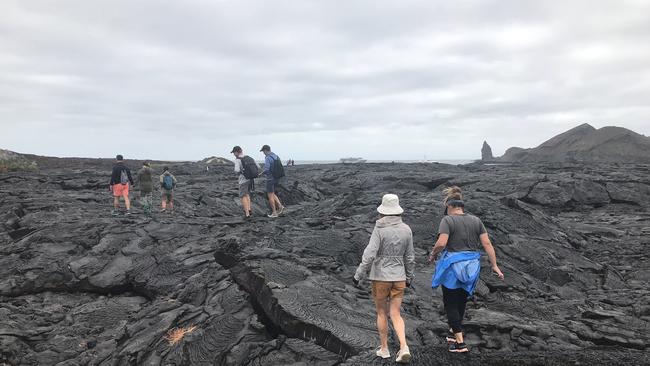
It’s a different story here. By the time we reach the reserve I’ve spotted about 50 tortoises beside the road, their mountainous domed shells protruding from the long grass. These lumbering leviathans are known to live for more than 150 years and can weigh up to 250kg. Unperturbed by our presence, their serrated jaws mow the grass in slow motion. Theirs seems a contented if damp and muddy existence, and unlike poor old Lonesome George, the last of his subspecies who died in 2012 at the Charles Darwin Research Station in Puerto Ayora, the tortoises apparently have no shortage of potential partners.
After a full week aboard, the last day of our itinerary takes us to Santa Fe, an arid islet southeast of Santa Cruz known for its endemic species of land iguana. We’ve already spotted a few of these hulking vegetarian reptiles at the aptly named Cerro Dragon (Dragon Hill). At that location, they look positively prehistoric, with yellow spines down their neck, and earthy-coloured scales fading to black down their body. They strut like gym junkies whose muscular arms and legs have outgrown their torsoes. Santa Fe is home to about 7500 specimens found nowhere else on the planet and the males are decked out in a more contemporary camo-print colouring.
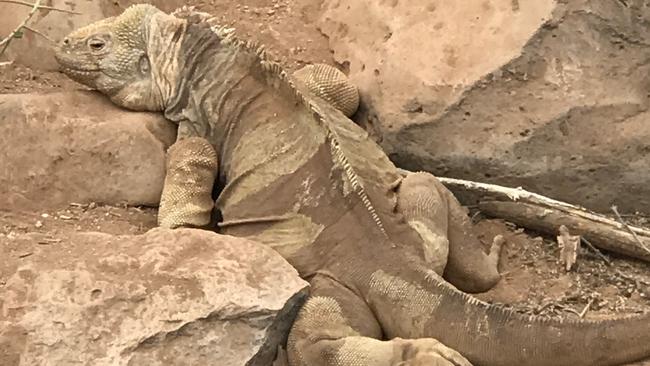
Of all the creatures in the Galapagos, it’s the sea lions that are most engaging. During the voyage we snorkel every day, spying turtles, eagle rays, white-tipped reef sharks and vibrantly hued starfish. Sadly, the famed hammerhead and Galapagos sharks remain elusive, which might explain why sea lions are everywhere. Cute pups wrestle in a sandy paddling pool while a big bull patrols the perimeter for predators. Another amorous male is barking his interest in any females that might care to listen. No means no, buddy. They’re just not that into you.
Another afternoon, at Genovesa, a sea lion stubbornly blocks the stairs leading up from our landing dock, refusing to vacate as a crew member encourages it to move on. It protests before slinking down to a rock where it stares back accusingly. On another day, as we’re gearing up for a snorkel, we discover a sea lion resting on the edge of one of the Zodiacs. Its eyes are closed in apparent bliss and its wet coat glistens in the sunlight. Attuned to the gentle bobbing of the boat, that sleek and sinuous body is revealed as a wondrous swimming machine. On a snorkelling excursion, two juveniles have been left to their own devices and decide to have a little fun with the visitors. They rumble and tumble around us, floating upside down, staring straight into our masks before baring their teeth, shooting out a burst of bubbles and zooming away in a game of “Boo!” At Puerto Ayora, the main tourism hub, a bench at the ferry terminal is occupied by a slumbering sea lion, while another rests its head hopefully at the foot of a vendor at the fish market. For the locals, they seem to be as commonplace as brush turkeys.
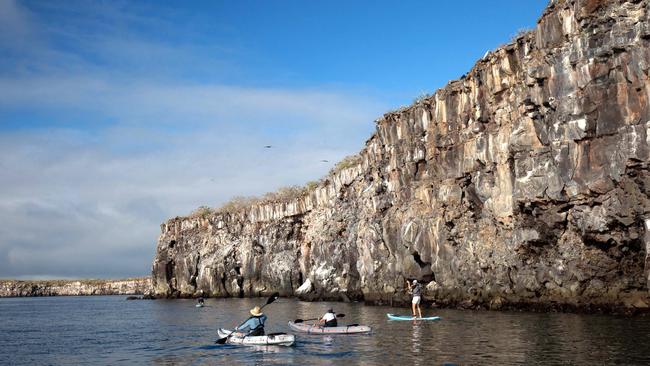
Santa Cruz is where our adventure ends. It’s connected by ferry to Baltra, where planes transfer tourists back to mainland Ecuador, 1000km away. As we power across open ocean to the port, I’m perched at the front of the top deck, revelling in late afternoon sunshine and sipping a cold beer. Magnificent frigatebirds are suspended in V-formation above the boat, riding the uplift with barely a flap of their wings. Every now and then I catch a glimpse of the male’s vibrant red throat, the main weapon in his mating armoury. My odyssey began with one of the Galapagos’s marvellous creatures, now another soars beside me, keeping its distance but close enough to admire.
In the know
Aqua Expeditions’ Aqua Mare sails seven and 14-night east and/or west itineraries from either Baltra or Santa Cruz; from $US10,000 ($14,100) a person, twin-share, including all meals, select beverages and guided excursions. Snorkelling gear, including wetsuit (the water can be cold), is provided. Guests also have access to kayaks, stand-up paddleboards and basic gym equipment. Flights from mainland Ecuador are extra but shared transfers to the vessel are included.
Penny Hunter was a guest of Aqua Expeditions.


To join the conversation, please log in. Don't have an account? Register
Join the conversation, you are commenting as Logout